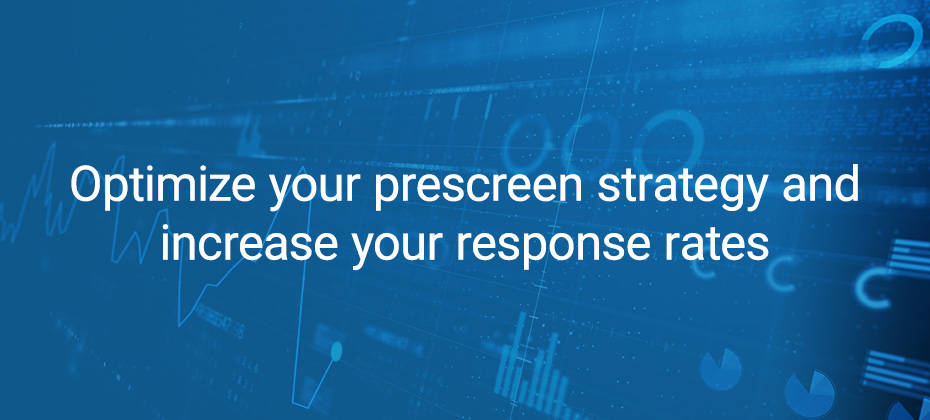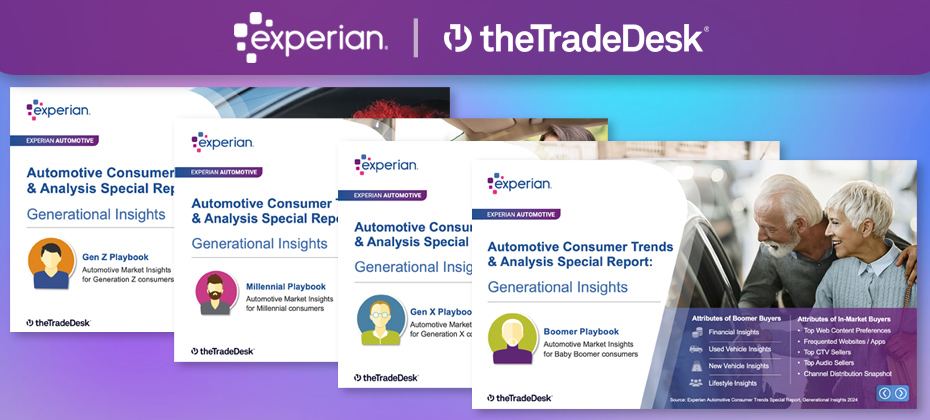
This article was updated on September 8, 2023.
Prescreen, prequalification and preapproval. The terms sound similar, but lenders beware. These credit solutions are quite different, and regulations vary depending on which product is utilized.
Let’s break it down…
What is prescreen?
Perhaps the most reliable mailbox tenant, thick envelopes splashed with “limited time offer” or other flashy designations offering various card and credit products – otherwise known as prescreen offers – are a mainstay in many households.
Prescreen is a process that happens behind-the-scenes where a lender screens a consumer’s credit to determine whether to extend a firm offer of credit. The process takes place without the consumer’s knowledge and without any negative impact to their credit score.
For lenders and financial institutions, credit prescreen is a way to pick and choose the criteria of the consumers you want to target for a particular offer – often in the form of better terms, interest rates or incentives. Typically, a list of consumers meeting specific credit criteria is compiled by a Credit Reporting Agency, like Experian, and then provided to the requesting lending institutions or their mailing service.
In other words? Increase response rates and conversion by targeting the right consumers and eliminating unqualified prospects. Additionally, prescreening consumers also reduces high-risk accounts, targeting the best prospects to reach them at the right time with the right offer for their needs.
Gone are the days of batch-and-blasting. It’s expensive and a challenge for constantly limited marketing budgets. Prescreen decreases acquisition and mailing costs by segmenting a lender’s prospect list. In one case, a lender identified more than 40 thousand loans, representing $466 million in loan growth opportunities, after using digital prescreen.
Governed by the Fair Credit Reporting Act (FCRA), lenders initiating prescreen campaigns for credit products must also adhere to certain rules. What qualifies one of these campaigns?
- A firm offer of credit
- An inquiry posting is required (though it is a “soft” inquiry)
- Consumers also have the option to opt out of preapproved and prescreen credit offer lists
In addition to acquisitions via direct mail, there are various types of prescreen tailored to the multiple channels where marketing takes place in today’s world. For example, Instant Prescreen can increase new account acquisitions by performing the preapproval process in seconds, while the customer is on your website, on the phone with you or at your business.
Similar to how you might screen calls on your cell phone by letting them go to your voicemail inbox or screen candidates’ resumes before inviting them for an interview for an open position at your company, a prescreened credit offer is not much different. Focusing on your audience that is most likely to respond to your offers is an easy way to increase your ROI and should be considered a best practice when it comes to your marketing efforts.
What is prequalification?
Prequalification, on the other hand, is a consumer consent-based credit screening tool where the consumer opts-in to see which credit products they may be qualified for in real time at the point of contact. Unlike a prescreen which is initiated by the lender, the prequalification is initiated by the consumer. In this instance, envision a consumer visiting a bank and inquiring about whether they would qualify for a credit card. During a prequalification, the lender can explore if the consumer would be eligible for multiple credit products – perhaps a personal loan or HELOC. The consumer can then decide if they would like to proceed with the offer(s).
A soft inquiry is always logged to the consumer’s credit file, and the consumer can be presented with multiple credit options for qualification. No firm offer of credit is required, but adverse action may be required, and it is up to the client’s legal counsel to determine the manner, content, and timing of adverse action. When the consumer is ready to apply, a hard inquiry must be logged to the consumer’s file for the underwriting process.
With Experian’s Prequalification, you can match prospective customers with the right loan products at the point of contact, allowing you to increase approval rates and ROI.
How will a prequalification or prescreen invitation/offer impact a consumer’s credit report?
Inquiries generated by prequalification offers will appear on a consumer’s credit report. For “soft” inquiries, in both prescreen and prequalification instances, there is no impact to the consumer’s credit score.
However, once the consumer elects to proceed with officially applying for and/or accepting a new line of credit, the hard inquiry will be noted in the consumer’s report, and the credit score may be impacted. Typically, a hard inquiry subtracts a few points from a consumer’s credit score, but only for a year, depending on the scoring model.
Learn more about Prescreen | Learn more about Prequalification


